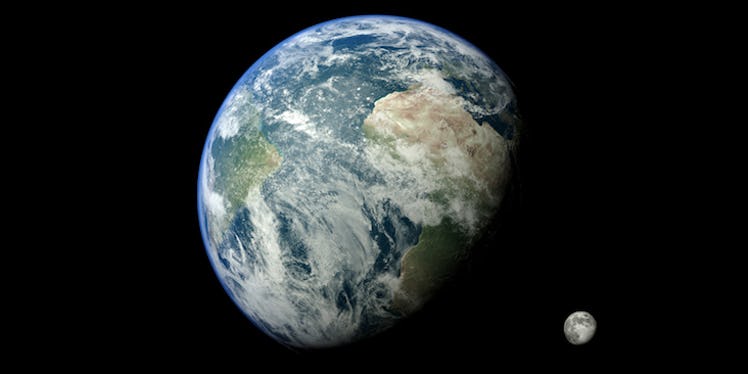
NASA Discovers 10 New Earth-Like Planets, So Maybe Aliens Do Exist
Perhaps we're not the only ones inhabiting the solar system, and thanks to NASA's latest discovery, we could be that much closer to figuring out if aliens are actually among us.
OK, OK... I know I'm getting a little ahead of myself with the extraterrestrial discoveries that haven't actually happened, so let me just fill you in on the basics.
NASA announced on Monday that the Kepler Space Telescope has discovered 219 exoplanets — which are planets located outside of our solar system — and 10 of them are "rocky and raw" like Earth.
But that's not what's most exciting about the findings. The fact that these 10 planets are within the "habitable zone" of their stars means they are able to support life.
Can I get an "E.T. phone home?"
If you're still a little suspicious, these 10 planets are the right temperature for liquid water, which is believed to be how planets sustain life.
Throughout its four years in space, the Kepler Telescope has discovered over 4,000 possible exoplanets, which include the ones discovered today. A total of 50 planets discovered over this stretch of time have the ability for water to be present (and you know what that means).
According to The Daily Star, Kepler program scientist Mario Perez said, “The Kepler data set is unique, as it is the only one containing a population of these near Earth-analogs – planets with roughly the same size and orbit as Earth."
Thank goodness we have someone keeping track of this. I mean, who knows what we'll discover in the future (I hope it's aliens ... friendly aliens, of course).
Susan Thompson, Kepler research scientist for the SETI Institute, echoed that sentiment and said, “This carefully-measured catalogue is the foundation for directly answering one of astronomy's most compelling questions: How many planets like our Earth are in the galaxy?”
Think of it as biologists discovering another animal — like this darling little sea creature.
Thanks, Science!